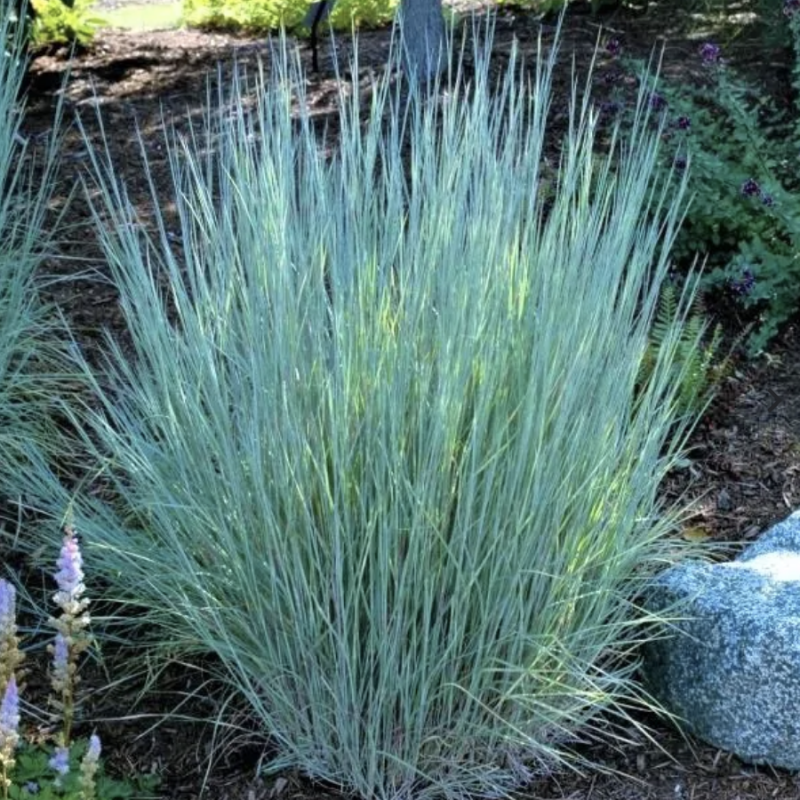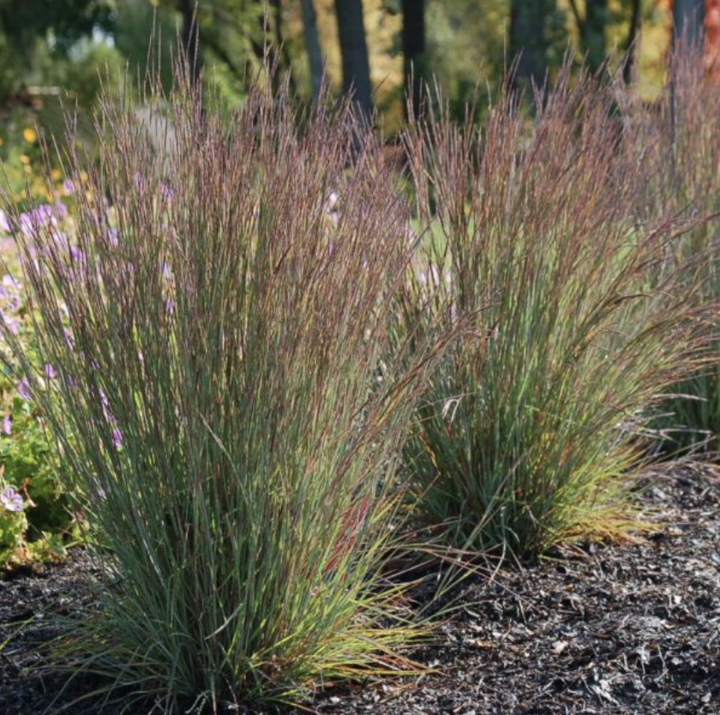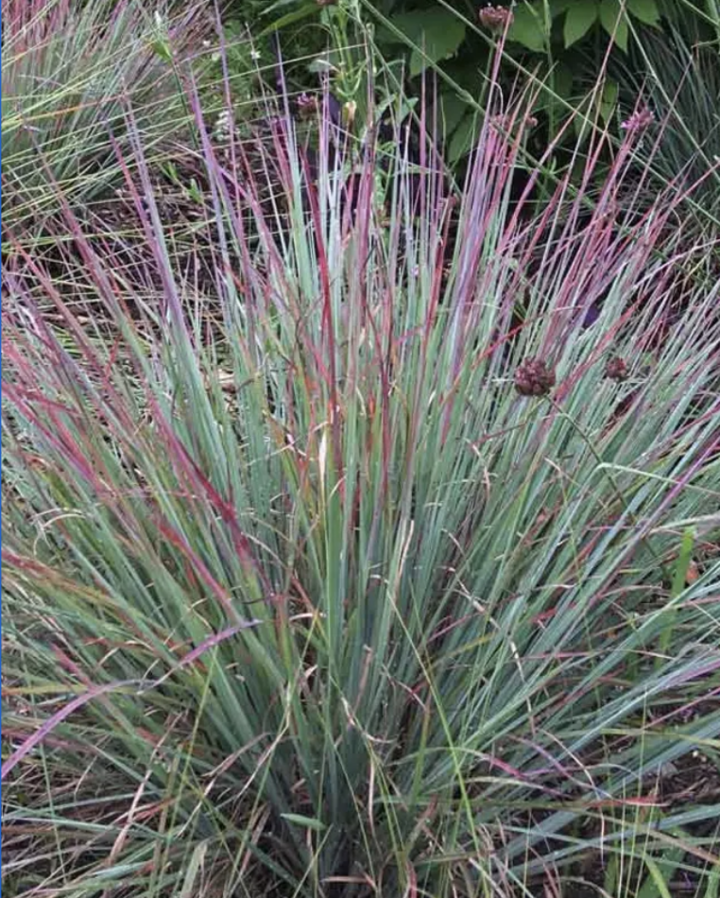Sarah Browning, Nebraska Extension Educator

'The Blues' little bluestem. Image from Nature Hills Nursery.
The Perennial Plant Association (PPA)is a professional horticulture trade organization dedicated to improving the perennial plant industry by providing education to enhance the production, promotion and utilization of perennial plants.
The 2022 perennial of the year is little bluestem, Schizachyrium scoparium, and its’ ornamental cultivars.
Grasses also add a sense of movement to a landscape as the foliage and flower heads dance in the wind. Their foliage remains throughout the winter months to give added interest in the winter landscape.

Growing Little Bluestem
Little bluestem is a warm-season grass which starts growth in late spring and stops in early fall. Plants grow most actively during the hot days of summer and are quite drought tolerant once established. It’s native to a large portion of North America and was one of the main components of the tall grass prairie. They are hardy to Zone 3.
Little bluestems upright nature makes it a great compliment to many blooming perennials, such as coneflower, sedum, coreopsis, blanketflower, asters and many more. It’s also a larval food source for a variety of butterflies and moths, including several species of skippers.
To maintain an upright growth habit, little bluestem requires full sun, well-drained soil (clay or sandy) and dry growing conditions (once plants are well established). Loosen heavy or compacted soil before planting to enable better root development of young plants. They perform well in poor soil and keeping soil nitrogen levels low is important to prevent lodging, flopping or the need for staking. Cut back clumps in late winter or early spring before new growth appears.
Plants grow 2-3 feet tall, depending the cultivar. In summer the foliage is medium green to bluish-green, changing in fall to reddish-bronze or orange. The seed heads are produced in late summer to early fall, consisting of fluffy, beige plumes.
If little bluestem tend to flop down on the ground in your gardens, they are either getting too much shade, too much water or too much nitrogen.
Image above - 'Jazz' bluestem. Image from Whiteflower Farms.

Cultivars to Consider
Great cultivars to consider include ‘Blaze’, ‘Blue Heaven’ and ‘The Blues’.
- ‘Blaze’ little bluestem foliage emerges light blue in spring, darkens to gray-green in summer, then finally bursts into shades of pinkish-orange, reddish-purple, or vivid red in fall. Erect, broom-like clumping growth habit. Height 2-3 feet.
- ‘Jazz’ Silvery blue summer foliage gives way to strong purple to deep bronze fall color. Discovered as a sport to ‘The Blues’, it is shorter with a height of only 2-2.5 feet.
- ‘Blue Heaven’ is a 2013 selection from the University of Minnesota. Touted for its very upright, broom-like growth habit and beautiful, blue-grey foliage that turns purple-red in fall. Height 2-4 feet.
- ‘The Blues’ forms an erect, upright clump with slender greenish-blue foliage, with hints of pink and purple. Leaves develop burgundy-red and orange tones in fall. Height 2-4 feet.
- ‘Standing Ovation’ is another popular cultivar with a tight upright growth habit. It stays in a uniform clump in garden. During summer the foliage is blue green, with purplish coloration at stem bases, changing to red and orange in fall. Height 2-3 feet.
Native grasses like little bluestem are an important component of Great Plains flora and a wonderful addition to a landscape. They are very well adapted to Nebraska’s challenging growing conditions, tolerating drought and fluctuating winter temperatures very well. Consider adding little bluestem to your gardens this summer!
Image of 'Standing Ovation' bluestem in early fall. Image from Bluestone Perennials.
Choosing the Perennial Plant of the Year
Each year PPA selects and promotes the Perennial Plant of the Year. Selection of plants is simple; PPA members nominate plants for consideration and then vote for the best plant, usually with three or four plants on the ballot. Plants are nominated based on several criteria, such as suitability to a wide range of climatic conditions, multiple seasons of ornamental interest, low maintenance, pest resistance, availability, and ease of propagation.
Search Our Archive
Associated Video
Rainwater Conservation
Nebraska Forest Service's Amy Seiler shows a few demonstrations of urban water conservation,